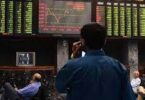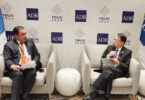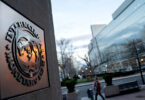Sher Afzal
KARACHI: State Bank Pakistan (SBP) quarterly report states that Pakistan’s automobile sector has crossed double-digit growth of 23.4% across the board, with cars improving 24.7 percent, motorcycles 20.3 percent, LCVs 30.2 percent, and tractors 57.5 percent. Low-interest rates, relative stability in automobile prices and the introduction of new models led to this increase however remittances has played important role in the hike because remittances recorded at the highest.
The report stating that price stability was significant, as the overall registered increase in automobile prices was merely 3.4 percent for the three quarters as opposed to 20.8 percent for nine months of the previous fiscal year.
Under the Automotive Development Policy, 2016-2021, several new auto-assemblers invested resources in the automotive industry during the previous fiscal year. The government’s incentives to revive the economy from the pandemic impacts also had a positive effect on the automobile sector.
The indirect impetus came from the improved agriculture sector and construction sector. Record remittances also contributed to the increase witnessed in sales of automobiles, the report noted.
In May 2021 the Pakistani market keeps growing quickly after reporting a 73.3% increase in Q1, and reports 16.091 units sold (249.6%), leading Year to Date sales at 89.688 units, a 142.3% increase in sales compared to 2020. Despite all these positive numbers, compared to pre-pandemic levels the market is still not recovered effectively, decreasing sales by 12.3% with respect to the same month in 2019.
The market has been unstable in the 2010-2014 period of time, registering a sharp fall in 2013, before embarking on a positive pathway in the following years. In 2017 the market was sustained by robust internal demand, reaching 247.330 sales (18.3%), followed by the current all-time record in 2018 at 6.9%.
However, in 2019, the market has imploded due to a tax introduction, making new car imports negligible. As a result, the Full-year ended at 192.814 units sold, losing 27.1% from the previous year.
After starting the year with a very negative trend (-42.6%), the market kept collapsing in March as the virus struck. The sharpest drop in sales this year was in April when sales declined by 99.6%.
In the following months, the market recovered and started growing again in August when sales rose by 36.2%. For the rest of the year, double-digit growth was maintained, with the biggest growth registered in November 45.5%.
Due to the COVID-19 pandemic sales fell in 2020. In fact, 127.939 units have been sold, reporting a decline of 33.6% compared to 2019.
In 2021 the year started positively for the Pakistan market, in fact, in Q1 56.031 units have been sold, reporting a 73.3% increase in sales compared to Q1 2020.
In April 17.566 units have been sold, reporting an enormous growth due to the incredibly low amount of sales in April 2020.
Due to Covid-19 pandemic supply of goods had disrupted across globe and especially automobile industry has affected greatly due to increase in demands but shipping sector does not fulfilling post pandemic situation of consumers.
The automotive industry is faced by chip shortage globally resulting in delays in committed delivery of vehicles both CKD and CBU.
This shortage is a direct result of COVID-19 pandemic. This issue is further aggravated by rising cost and non-availability of shipping lines due to post COVID-19 surge in global demand.
MG Pakistan with the support of its principle will honour all its commitments. The organization value the trust bestowed on us by Pakistan consumer. MG Pakistan is committed to localization, development of export based automotive industry. The industry feel allegation of fraud and other misconduct is part of a planned activity to distance our prospective consumers from the MG value its consumers. The negative perception created regarding over booking, under invoicing, dealership network and Parts is baseless.
On the contrary, MG Pakistan is growing fast in terms of vehicles delivered and dealership network. MG has successfully defended all allegations of under invoicing with the support of Chinese customs. We assure that we are in Pakistan and we will not deviate from our goal to increase consumer value in automotive industry.
The new data from Pakistan Automobile Association (PAMA) shows that the sale of passenger cars, jeeps, vans, pickup trucks, recorded a 24.3pc year-on-year jump to more than 113,905 units. The number doesn’t show the sales of one of the more aggressive new players, Lucky Motors. The two- and three-wheeler segment also expanded by 17.3pc year-on-year to 1.27m units.
The sales of tractors more than doubled. But the manufacturers of buses and trucks saw their sales plummet. The automotive industry’s growth reflects an overall uptick in domestic economic activities after Covid-19 lockdown restrictions were lifted. The hefty reduction in interest rates that pushed auto financing has also played a major role in the turnaround in car sales.
The industry was shrinking on plunging sales as the government took unsuccessful actions to document the economy. However, the new impetus to the sale of cars and other automobiles in recent months has engendered hopes of an early revival. Total industry sales, barring trucks, buses and two- and three-wheelers, are projected to spike to half a million units over the next five to six years if the current growth momentum continues.
With several Chinese carmakers presenting their brands and investing in local assembly in Pakistan to take advantage of the tax concessions given in the 2016-2021 auto sector policy, the automobile industry is undergoing significant change as customers get more choices and old players come up with new and better models. The interest shown by Chinese automobile companies in introducing their electric cars at discounted prices and the expectation that Japanese carmakers will bring in hybrid vehicles could usher in more changes in the auto landscape and intensify competition. The existing auto policy attracted new Korean and Chinese automobile brands, the next policy for 2021-26 must focus on incentives for auto exports and the introduction of smaller, affordable, entry-level cars for middle-class consumers, especially working women.






